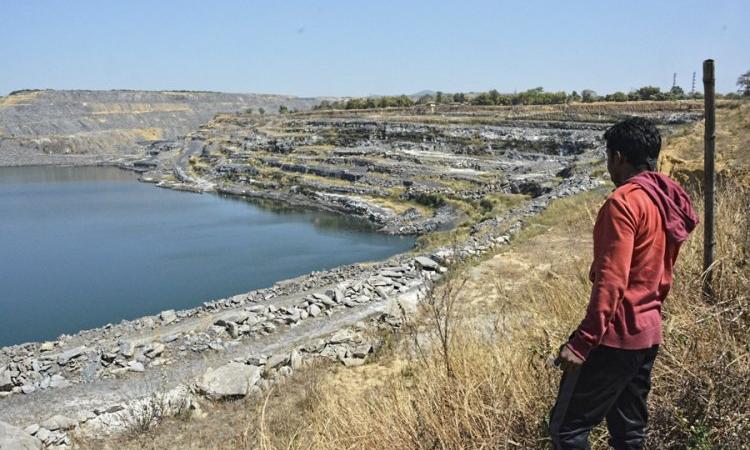
The coal mining sector is all set to receive a boost in India as the government plans to open up the sector to commercial players by 2018. Ten mines are in line for auctioning--four each from Odisha and Chhattisgarh and one each from Madhya Pradesh and Jharkhand.
Coal remains a much-contested source for electricity generation. However, India continues to rely heavily on coal-powered electricity after China and US and most of the existing power plants in India are known to be highly polluting.
Pushing for coal
Coal mining affects not only the environment but also the health of those working or even staying near the mines. A recent study, The health and environmental impact of coal mining in Chhattisgarh by People First Collective, India (PFCI) raises important questions on the relevance of the current aggressive policies of the government in commercial expansion of coal mining in some of the most biodiverse regions of the country.
The study done in Sarasmal, Kosampali and Dongamouha villages in the Tamnar block of Raigarh district of Chhattisgarh finds that people living in the vicinity of the mines have to bear the negative impacts of deforestation and deterioration of their surrounding environments such as loss of livelihoods and the risk of serious health hazards.
Chhattisgarh continues to be plundered for coal with yields as high as 134.764 Mt (22.12 percent of India’s total domestic production) followed by Jharkhand at 124.143 Mt (20.38 percent) and Odisha at 123.627 Mt (20.29 percent).
Raigarh district has huge reserves of coal, making it one of the state’s primary power hubs. It has been witnessing a growing level of installations of coal washeries, sponge iron plants and coal-fired thermal power stations. The district is currently home to 17 coal mines, 26 sponge iron units; over 13 thermal power stations are either operational or under construction.
A majority of people living in the vicinity of the mines are tribals who are totally dependent on agriculture for their survival. Extensive mining operations in the region have negatively affected farming due to loss of land, resources and cutting down of trees in forests. As a result, village men have been forced to find alternative sources of income by working in local mines and power plants. Women often work as manual labourers in government employment schemes brought under the National Rural Employment Guarantee Act of 2005, in addition to family caring, household and agricultural responsibilities.
Poisonous encounters
Air, water and soil samples from the area show presence of worrisome levels of toxic metals such as aluminium, arsenic, antimony, boron, cadmium, chromium, lead, manganese, nickel, selenium, vanadium and zinc, of which arsenic, cadmium, lead and nickel are carcinogenic.
Very few people in the mining areas are without any health complaints. The most commonly reported health conditions include hair loss and brittle hair, musculoskeletal and joint pain, body ache and backache, dry, itchy and/or discoloured skin and cracked soles, dry cough, breathing difficulties, eye and stomach complaints, chest pain and kidney problems. Dry cough, hair loss and musculoskeletal disorders including joint pain are most common among women.
The health complaints can be traced to sources like water and air and a number of households can be identified where two or more members experience similar chronic health complaints, indicating that these are related to the environmental impacts of mining operations in the region. Many of the health complaints are inflammatory in nature rather than infective which again indicates that pollutants from mining operations and not pathogens are the cause.
More youngsters complain of joint pain, body ache and/or backache. Dry, irritant cough without mucus is very common among people in the region which is likely to be caused by air pollutants rather than by living pathogens.
Skin complaints in the form of itching, rashes and/or hyper-pigmentation suggestive of contact dermatitis and dramatic hair loss are common among people in the region. These are most likely to be related to water pollution due to mining as water samples from local ponds and streams are found to be highly contaminated with toxic metals. Households in the village depend on shallow wells to meet their drinking water needs while water from shallow and deep wells, ponds and rivers is used for household use.
Mental illnesses ranging from anxiety disorders to mental depression have also been reported from the area. This has to do with a drastic change in the lifestyles of people and destruction of their lands, livelihoods and rampant pollution of their environment leaving them with no option but to migrate or to work in mines and industries as temporary workers.
Phasing out
The report argues for an urgent need to pay attention to the negative impacts of mines on the health of people and urges the relevant authorities to take immediate measures (listed below) before further damage to people and environment. The measures include:
- Undertaking further studies on the long-term impact of mining on the health and environment of people in the area.
- Undertaking remedial measures to prevent further pollution of the environment, and regular monitoring of emissions in the air, soil, water sources and fish in the region.
- Ensuring free and better quality healthcare services for people living near the mines and awarding affected families with punitive damages from companies responsible for the pollution.
- Imposing a moratorium on further expansion of existing mines or setting up of new mines until comprehensive health impact assessments of the mines and power plants are completed and its recommendations are implemented.
- Adopting policies to phase out coal use in the country and protect the environment from further damage.
/articles/coughing-out-coal